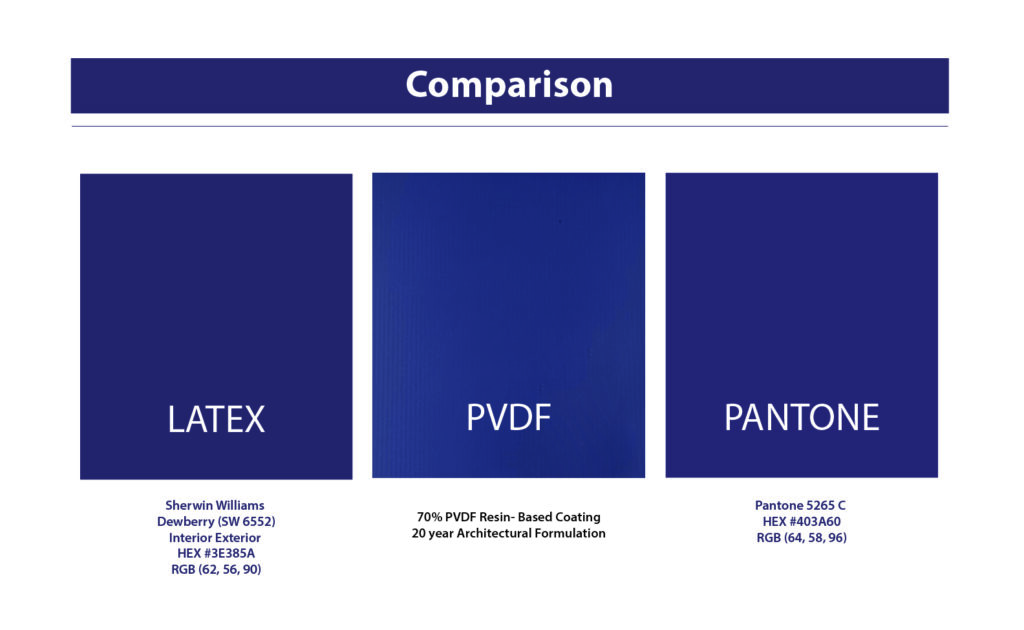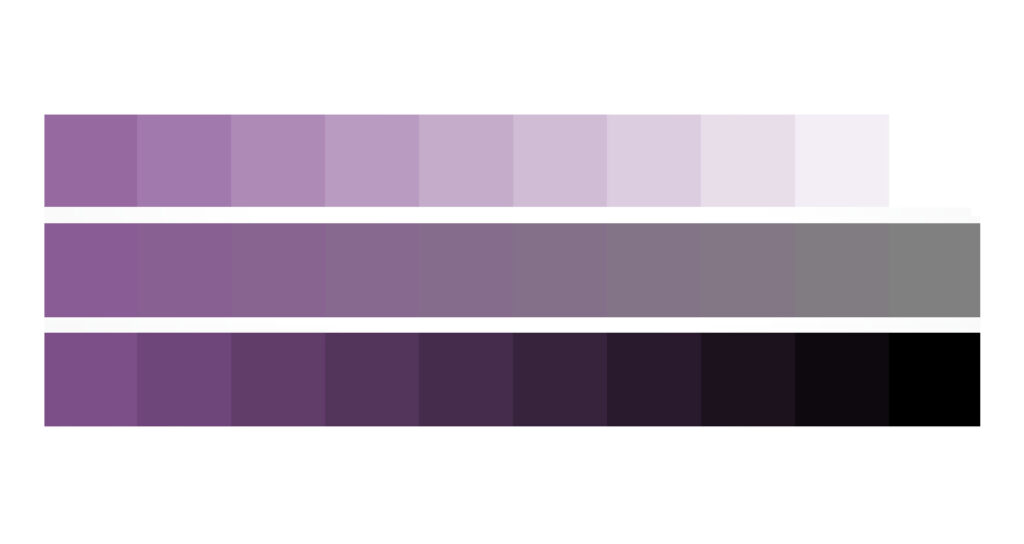Challenges Matching Unique Colors Like Purple and Magenta
As detailed in “Challenges Matching Popular Latex Paint Colors”, interior / exterior grade acrylic-latex paint finishes are frequently chosen for an exterior architectural façade, requiring them to be matched in an architectural finish coating system suitable for long term exterior exposure. This is challenging since the primers, resins, and pigments used in architectural metal coatings are very different from those associated with acrylic-latex paints. Depending on the color and paint system required, achieving that “perfect match to the acrylic-latex color in the color book” may not be possible. When the desired color belongs to more vibrant color families, achieving the desired exterior UV performance and an acceptable color match is even more complex – especially with colors like Purple and Magenta.
Color is Our Perception of Light

Color is essentially our brain’s visual perception of light based on numerous factors governed by the laws of physics. For simplicity sake, consider the three primary colors: red, blue, and yellow, who each possess a specific light wavelength we will refer to as “color signal”. When primary colors are mixed to create secondary colors like orange or green, the resulting color signal is roughly the average of the original ones interacting and our brain’s resulting perception of it as a different color. So, orange will have a color signal which is roughly the average of yellow and red. This approximation applies to most color combinations, except that is with colors like Purple and Magenta.
Purple and Magenta – Unique Examples
People often look at the rainbow and identify the color purple however, that color is actually Violet, one of its three secondary colors. Purple and Violet are often confused but when compared, Purple appears more ‘reddish’ while violet appears more ‘blueish’. Diving deeper, Violet is a spectral color, meaning that its singular color signal falls within the visible light spectrum. Non-Spectral colors do not appear naturally in the visible light spectrum rather, they are the rough average of other color’s signals. Mixing Red and Blue produces Purple however, when you average their color signals the resulting light wavelength falls in the Green-Yellow transition area. The same can be said for Magenta, a result of mixing Violet and Red, whose color signal would also be in the Green area. How is this so?
Our brains are constantly estimating observed colors based on their light wavelengths. For spectral colors, where a singular wavelength signal is received, we perceive that color. With Purple and Magenta however, the color signals sent to our brains in scientific terms of light wavelength are greenish. The reason we perceive those colors as we see them is a result of the human brain evolving over time to do so. In ultra-simplistic terms, those colors only exist because they are created in our brain.

The Effect on Color Matching
Color matching for exterior grade architectural coatings used on products like aluminum composite material (MCM wall cladding) can be quite challenging when dealing with blues, reds, vibrant, and exotic colors. In order to achieve that perfect match for a unique Purple or other deep vivid color, the result may be that no exterior warranty can be offered. So, keeping the desired performance warranty in mind as a “must-have”, there will be limitations to which primer, resin, and pigment combinations can be used. Therefore, the resulting color match may be duller, or skew more towards another color hue than the control sample. Finally, when considering that Purple and Magenta are perceived colors, essentially created by our brains, an even greater layer of complexity is involved. So even though the paint manufacturer will do their best to match these types of colors, the result may not be a 100% match due to a combination of UV requirements, raw material limitations, and science.


